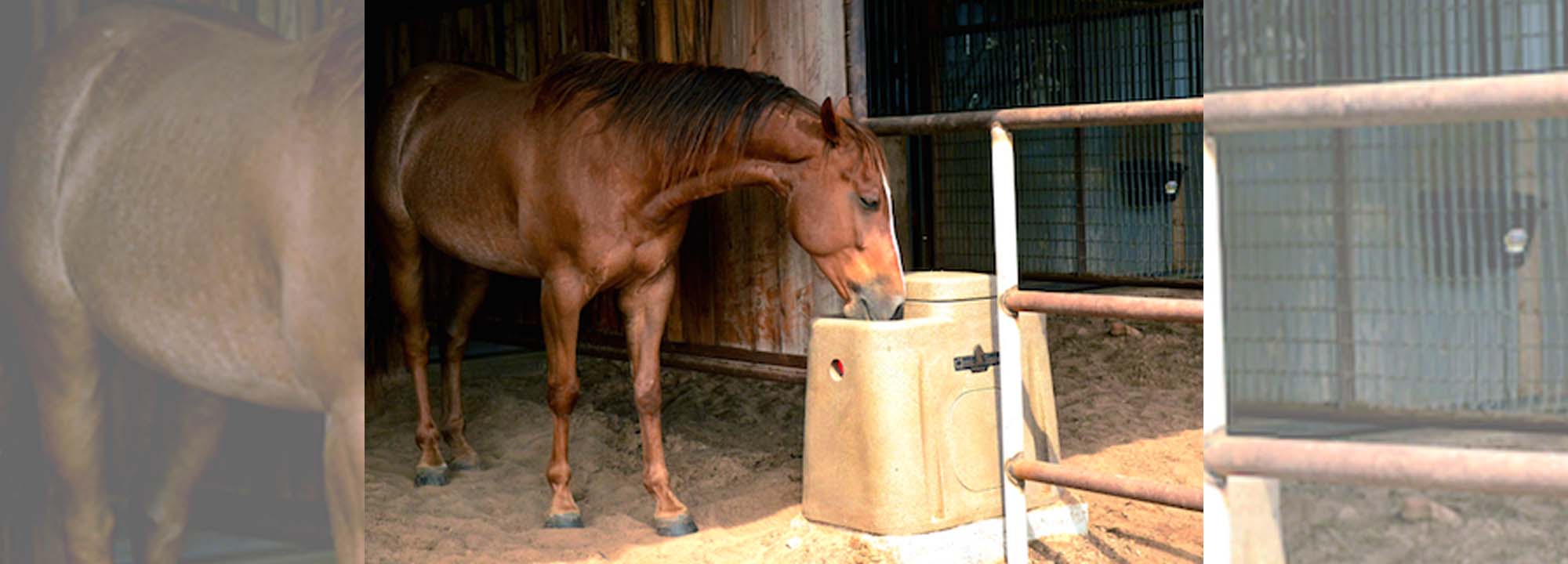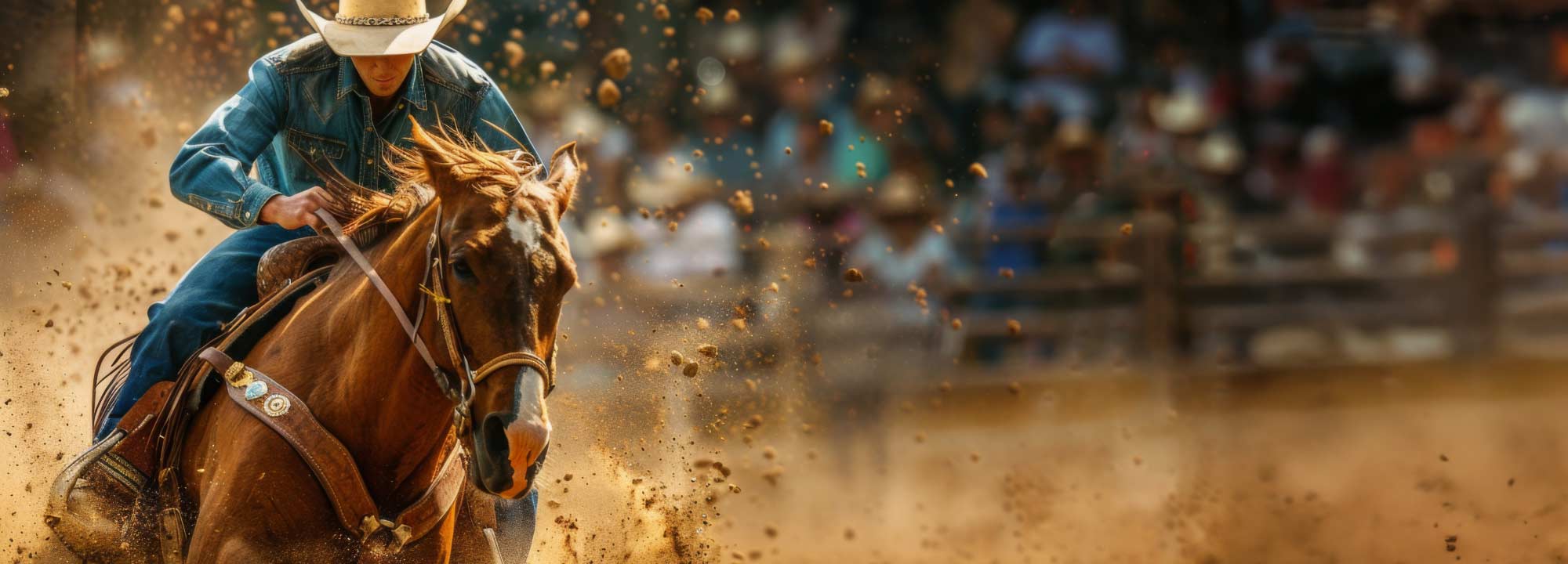By Ritchie Industries
Water quality has always been a major concern for horse owners, whether they are on a public or private water source. It is easy to take your water quality for granted. After all, as long as it is clear, everything should be fine, right? Events like the recent Norfolk Southern derailment in East Palestine, Ohio, bring water quality concerns into sharp focus and prompt many folks to wonder, what exactly is in their water?
A Quick Primer on Who is Responsible for What – Public vs. Private
If you are on a public water or municipal system, the Environmental Protection Agency (EPA) sets the standards and regulations. The EPA oversees the states, localities and water suppliers who implement those standards. In 1986 and 1996, the Safe Drinking Water Act was amended to protect drinking water and its sources, which include rivers, lakes, reservoirs, springs and ground water wells.
Public water systems (PWS) are those having at least 15 service connections or serving at least 25 people for 60 or more days a year. Each PWS supplier must provide an annual report called the Consumer Confidence Report (CCR) to their customers. You can request a CCR from your water company if you need a copy. There are over 90 different contaminants that are tested on a regular basis with some contaminants tested more frequently than others. If you suspect contamination or just want to verify the CCR results for yourself, you are free to conduct your own water testing through a certified laboratory or contact your local health department. Testing can cost anywhere from $20 to $150 depending on the contaminants you are testing for.
Private well owners are responsible for maintaining the safety and quality of their drinking water. It is up to the private well owner to conduct their own water testing. It is recommended that you use the same laboratory year after year to provide consistency with the results. Certain laboratories may also be able to provide advice on how to improve your water quality. Again, the testing will range between $20 and $150.
When should you test your water?
Plan to test your water annually and more frequently, if you suspect contamination. It is also recommended that you test your water supply if:
-
- There are known issues affecting well water and/or surface water sources.
- Your farm or area has had a flood or other major land disturbances. This includes any issues with waste disposal sites.
- You replace or repair any part of your well or watering system.
- You notice a change in water quality, such as taste, color or odor.
To find a state certified laboratory in your area, call the Safe Drinking Water Hotline at (800) 426-4791 or visit www.wellowner.org for more resources.
What should I be testing my water for?
-
- Physical parameters monitored include odor, color, temperature, turbidity and total dissolved solids (TDS).
- Chemical and biological factors include hardness, pH, minerals, protozoa, algae, bacteria and chemical residues.
What are the guidelines for horses?
Most guidelines are like those for humans, but horse owners should pay particular attention to:
-
- TDS – The safe upper limit of TDS for horses is 6,500 mg/L. Water below 1,500 mg/L TDS is considered fresh water. Water greater than 5,000 mg/L TDS is considered saline. Most drinking water is less than 500 mg/L TDS.
- pH – Your water should be in the range of 6.5 to 8.5. If the pH is more acidic (less than 5.5), acidosis and reduced feed intake may occur. Highly alkaline water (over 9) may cause digestive upsets and diarrhea.
- Nitrates – Elevated levels can cause digestive issues. Water containing less than 400 mg/L of nitrate is generally safe, while a level over 1500 mg/L may be toxic.
- Protozoa – After heavy rains or flooding, these single-celled organisms such as cryptosporidium and giardia can be introduced into the water system. These nasty bugs can cause diarrhea, fever and dehydration in your horses.
- Algae – Almost all water contains algae but once a water source (like a pond or lake) starts to build up a concentration of plant nutrients, such as phosphorus and nitrogen, during dry, hot weather, it can bloom or grow out of control. Blue-green algae (cyanobacteria) blooms are the most dangerous for your horses. According to Cynthia Gaskill, DVM, Ph.D., and clinical veterinary toxicologist at the University of Kentucky Veterinary Diagnostic Laboratory, it is impossible to tell visually if a water source contains blue-green algae or cyanobacteria. There are over 2,000 species of blue-green algae identified and at least 80 are known to produce toxins that can be deadly for horses and humans.
- Bacteria – The two main bacteria to test for are salmonella and E. coli. The EPA standards are less than one colony forming unit per 100 milliliters.
- Copper – According to Kentucky Equine Research, many horse owners use copper sulfate or products that contain copper sulfate to keep traditional steel tanks clean. This can unfortunately lead to exceedingly high copper levels in the water. The EPA approved level for copper in drinking water is 1.3 mg/L. Over time, elevated levels can lead to a whole host of health issues, including liver and kidney failure.
Make Sure It is Fresh and Clean
One of the best ways to safeguard your horse’s water is to install an automatic waterer. Automatic livestock waterers, such as Ritchie waterers, are a key component in reducing water usage and waste. Automatic waterers conserve water by providing only as much water as the horse can drink at any given time.
Ritchie automatic waterers deliver clean, fresh water on demand throughout the harshest of climates. Details like easy-to-clean founts, stainless steel troughs and fast refill valves all help keep the drinking environment safe and healthy. No need for harsh chemicals that can leach into the trough, just a simple scrub with a brush on a regular basis is enough to keep your waterer clean. Automatic waterers also provide mosquito prevention by disrupting the life cycle of pesky mosquitoes that can transmit West Nile virus.
Since 1921, Ritchie waterers have provided worry-free water solutions for horse owners across North America. Made in the USA and backed by the best warranty in the business, Ritchie waterers are the perfect way to keep your horse’s water cool, fresh and clean throughout the year.
For more information visit: Ritchie Industries.





